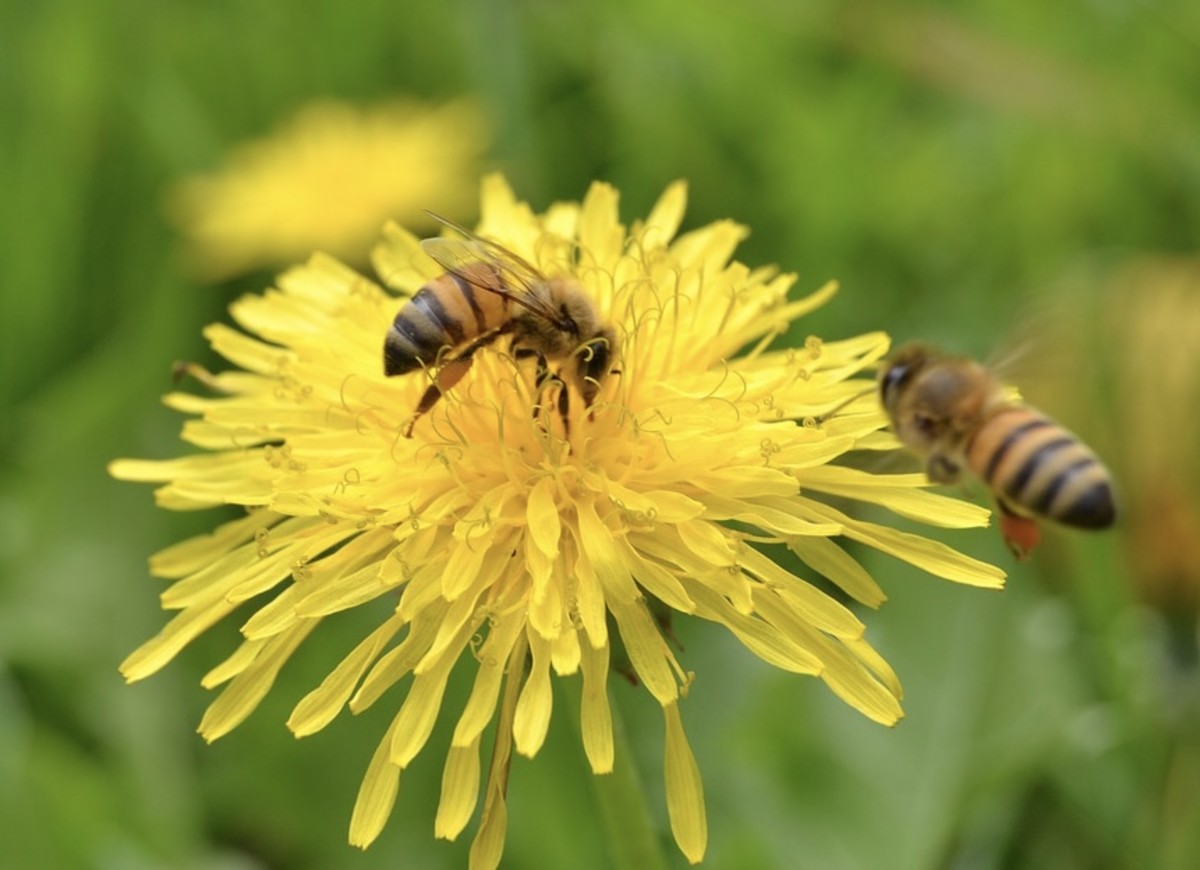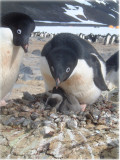Lionfish for Dinner, Anyone?
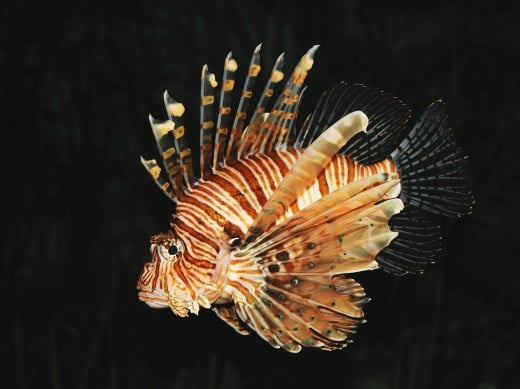
There used to be a time when we could never imagine being served a common aquarium fish on our dinner plates as a part of our quest for gastronomy wonders. It's just seems unnatural to visualize our little swimming buddies being scooped up from the tank, filleted, seasoned and thrown into a pool of scorching cooking oil to be deep fried and finally being served with chips on the side.
Common aquarium fishes like goldfish, betta, suckermouth catfish and swordtail are indeed edible, but on a deep unconscious level we can't never cross the line that separates these aquatic creatures from being mere trophies for decoration purposes and therapeutic outlets to a source of energy and seafood cravings. It just seems that these aquarium fish draw the short straw either way. Which makes me really glad to be standing on top of the food chain!
However, 1 type of aquarium fish has made into the exception. 2 species of the lionfish, Pterois volitans/P. volitans and Pterois miles/P. miles have made the cross from aquarium ornament to seafood delicacies, in large part to the efforts of National Oceanic and Atmospheric Administration (NOAA) in promoting their 'Eat Lionfish' campaign which was launched way back in 2010. This campaign is still active today, carried out in retaliation to the threat of lionfish as an invasive species.
What is invasive species?
A species that is not native to the ecosystem under consideration that may cause harm to the local economy, environment and human health. Invasive species can be in the form of plants, animals and microorganisms.
Probable vectors
What really cause lionfish to end up as dishes in kitchens and restaurants? The emergence of this novel seafood fare was brought about by the occurrence of invasive species, which was actually a human-caused global change. Lionfish were kept in the US for years, and researchers say they were probably released into the Atlantic near Florida by 'retiring' aquarium enthusiasts in the mid-1980s.
It was also suggested that the most likely vector for lionfish introduction to the US Atlantic coast took place during the rage of Hurricane Andrew on 24th August, 1992. 6 lionfish were accidentally released from a marine aquarium in the midst of the hurricane into Biscayne Bay. However, this unintentional release is considered anecdotal and not well-documented, as there is also a record of lionfish capture in Dania Beach, Florida in 1985.
Rapid proliferation
Since their introduction in the Atlantic, the lionfish population has increased steadily. Over the last 15 years, significant presence of non-native lionfish can be found throughout much of the US East Coast, Gulf of Mexico, the entire Greater Carribean and Campeche Bank. P. volitans occurs throughout the invaded range, whereas sibling species P. miles appears to be restricted to the US mainland. Furthermore, researchers believe that it is a matter of time before lionfish will show up as far south as Brazil if they continue to proliferate and migrate at the current rate.
To give you a further sense of urgency to address this issue, we can view the issue quantitatively. Some of the lionfish densities in invaded areas had surpassed their native densities in the South Pacific. For example, average densities of lionfish on the Bahamian coral reefs of 390 lionfish per hectare place Bahamian lionfish at several times higher than in its native ranges, from 2.2 lionfish per hectare in Palau to 80 lionfish per hectare in the Red Sea. Population studies conducted in regions of Trinidad and Tobago showed lionfish densities of 326 per hectare, which was more than four times higher than the values from their native range.
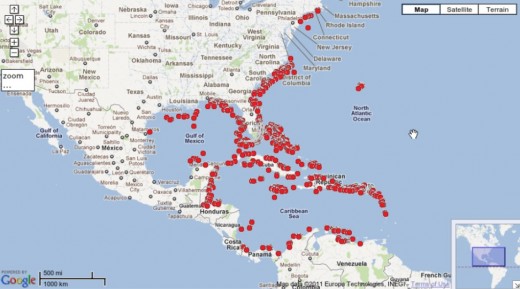
Why is this a bad news?
In the United States alone, the harmful consequences from invasive species resulted in environmental damages and disturbances to fishery industries that lead to losses of more than 120 billion USD annually. Invasive species such as lionfish compounded the existing problems that we are already facing such as climate change, overfishing, coral bleaching and anthropogenic nutrient loads.
What makes lionfish such a successful invasive species?
1. They're commandos of the fish - they can survive and thrive anywhere
Lionfish have high tolerance for varying environmental conditions, such as temperate hard bottoms, shallow and mesophotic coral reefs, seagrass beds, estuarine rivers, mangroves as well as artificial structures like shipwrecks. They can survive in both cold and warm water temperatures. The ability to survive extended periods of time with little food is an asset in their invasion of other coastal areas which may cover a long distance.
2. They like to keep themselves busy all the time
Lionfish are known to grow very quickly and reach maturity in the early phase of their life. They have an average lifespan of 15 years in the wild. They spawn throughout the year and several times per month. Female lionfish can produce up to 2 million eggs per year, which are released in a protective, gelatinous mass that may enhance fertilization and provide protection. The males have an elaborate courting display and will use their spines in agonistic displays with competing males. Besides the invasion of matured lionfish, ocean current plays a part in dispersing the lionfish larval to other areas of the ocean, thus intensifying the population spread of lionfish.
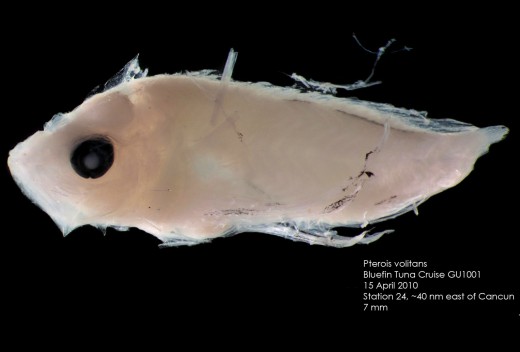
3. Effective predators
Lionfish can grow up to 50cm in length, which necessitates their consumption of 4% of their body weight per day. They are voracious predators, often preying on smaller fish and crustaceans. Lionfish have been observed consuming 20 small fish in a 30-minute period and prey up to 2/3 of their own length. This is where the unique problem of lionfish invasion surfaces. Besides the current overfishing of native fish like the grouper and snapper, lionfish threaten the recovery of native fish population when both of these native fish and their prey become a part of lionfish diet. In the long run, lionfish present a potential risk of destabilizing the local ecosystem and disrupting the survival of other species in the natural food chain .
The physical appearance of lionfish, with their billowing fin rays and flashy stripes of white, black and red gives lionfish advantages in terms of blending in with their surroundings and also mimicking the physical characteristics of seaweed, a crinoid or tube worm. When hunting, lionfish prefer to herd their prey into a corner or confined space using their large fan-like pectoral fins and swallow its prey in a single motion. Atlantic prey fish have not encountered such a predator in their evolutionary history, and native prey seem to take no evasive action. The effectiveness of this hunting strategy is magnified whenever lionfish search for their prey together in a pack. This scenario is quite similar to the hunting strategy of their namesake on the land; the lions, where both of these animals would rely in the strength of numbers against weaker and easy prey.
4. It pays to have venomous defense and flamboyant mimicry in the wild
The lionfish is a sight to behold in the aquarium. However, nobody in the right frame of mind will scoop it up with their bare hands to admire their aesthetic features. Apparently, the same cautious approach can be seen in nature, where potential predators prefer to avoid any entanglement with the lionfish. The venomous fin spines of lionfish are used as a defense mechanism against predators, fisherman, divers and wildlife researchers which makes them quite invincible in nature. This species can inject venom via 13 dorsal-fin spines, 3 anal-fin spines, and 2 pelvic-fin spines, one in each fin.
The tell-tale of their hostility can be pointed out easily; when threatened, lionfish will arch their backs, pointing their dorsal spines at the aggressor, and swim forward rapidly in order to deliver the sting. This defense mechanism of lionfish allows them to ward of attacks from larger predators such as sharks or groupers without risking injury to the lionfish. Another factor that contributes to unsuccessful predation of lionfish is deception. Native predators rarely recognize lionfish as potential prey because of 2 reasons. Being slow swimmers, lionfish don't give the impression of urgency to add space between them and predators. Secondly, their ability to mimic harmless beings such as tube worm or seaweed allows lionfish to swim by without much a glance from the predators.
How can you help?
Fighting the invasion of lionfish is not just about saving the native fish. It is a fight to save the ecosytem, environment and economy. Researchers have suggested that lionfish removal level as high as 95% from invaded areas may be necessary for effective widespread control. A number of control measures have been proposed, among which one of them involves putting lionfish on the menu.
This is the part where you don't have to be a marine biologist to give a helping hand to save the environment and economy. The only weapon you need to fight this invasion is your appetite! In fact, in the US, eating lionfish is considered a civic duty according to NOAA's 'Eat Lionfish' campaign. Promoters and advocates of this campaign say lionfish are tasty, with light, white and flakey meat. Lionfish have been shown to have high content of healthy Omega 3 fatty acids, low saturated fats and low heavy metals content.
Although lionfish are famous for their venomous spine, they are perfectly safe for consumption as the venom is only in the spines and all traces of it are destroyed in the cooking process. With normal precautions, a lionfish can be filleted to get a safe, niece piece of fish. Lionfish are easier to clean and fillet than you might imagine once you get beyond the tricky parts.






